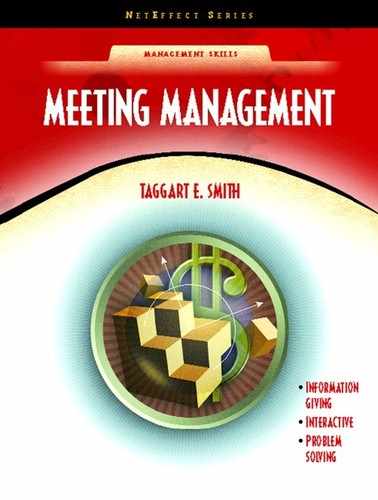0%
52Chapters
0-1Hours read
0kTotal Words
Book Description
This book provides practical information on a major business concern—how to manage meetings. It demonstrates how to lead them effectively, in the shortest time frame possible. Three types of meetings are outlined: information-giving, interactive, and problem solving, with details on how to prepare for and preside over each. KEY TOPICS: Chapter topics include an overview of the meeting process; structuring a topic and organizing the message; audience; platform conduct; visuals; agendas; disruptions; and asking and answering questions. MARKET: For training programs in business and industry. y.
